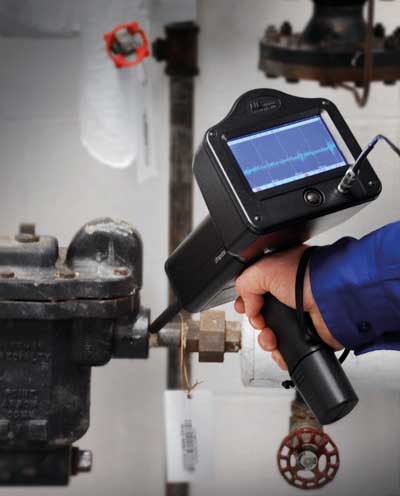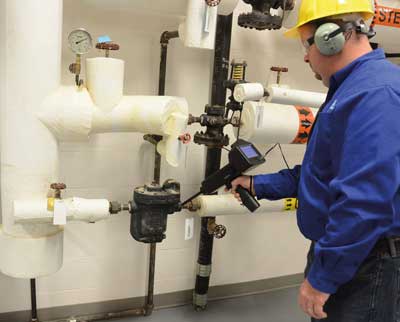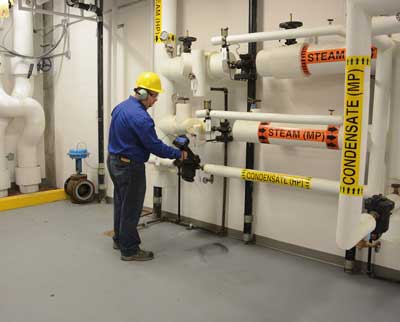High energy prices and global competition dictate a need to reduce energy waste and improve system efficiencies whenever possible. Steam, aside from being one of the costliest utilities in plants, is an essential component of product quality in many processing industries. Christopher Hallum, UE Systems Regional Manager UK & Ireland explains.

A major contributor to waste and inefficiency is leaks: both to atmosphere and through valves and steam traps. Improvements to the steam system may include insulating steam and condensate return lines, stopping any steam leaks, and maintaining steam traps. Experts have also said that as much as 20% of the steam generated at the central boiler is lost to leaking or failed steam traps.
The purpose of a successful steam trap inspection programme should be to repair any faulty steam traps and steam leaks that can affect safety, to reduce energy waste and promote sustainability as well as product quality.
Using ultrasound technology
Ultrasound technology is used by maintenance and reliability professionals around the world and is considered to be the most versatile of any predictive maintenance technology. Typical applications for ultrasound include compressed air and gas leak detection, inspection of bearings, motors, gearboxes and valves, electrical inspection of energised electrical equipment, hydraulic applications, and inspection of steam traps.
Planning for success
Before beginning your inspection, it will be helpful to think a few things through that will help to make the steam trap survey successful. First, walk the area to identify and tag every steam trap. The tag should include a number, and information should be noted such as the manufacturer of the steam trap, its type, the orifice size inside the trap, and the purpose of the trap.
Testing steam traps with ultrasound

When the inspector is at the steam trap, before testing with ultrasound it is recommended to take temperature readings with a simple spot radiometer first. Not only will the temperature let the inspector know if steam is coming to the trap or not, it can also be used to estimate the steam pressure. If the steam trap is cold, the inspector should check to make sure that the valves are open or if the trap has been taken out of service. If the steam trap is warm or hot, the inspector can note the inlet and outlet temperatures and proceed to test with ultrasound.
When it comes to actually testing the steam traps with ultrasound, the most important item that the inspector will need to know is what type of trap is being inspected. This will determine what the steam trap should sound like once contact has been made between the trap and the ultrasound instrument. Steam traps will have one of the following sound characteristics: on/off or continuous flow.

It is recommended that you listen to a number of traps prior to starting the inspection to determine a “normal” sound characteristic for how the steam trap is operating under the operating conditions of your particular steam system.
Physical contact between the steam trap and the ultrasound instrument is necessary in order to be able to “hear” how the steam trap is performing. If using an ultrasound instrument that has frequency tuning, adjust the frequency to the recommended frequency setting of 25kHz.
Regardless of the type of trap, the contact probe will always be placed at the discharge orifice of the trap, since turbulence is created on the outlet side of the steam trap when the steam trap releases condensate.
Once contact has been made, adjust the sensitivity/volume on the instrument until the sound of the trap can be heard.
When inspecting steam traps with ultrasound, it is important to exercise patience. Make contact at the discharge orifice of the trap and wait for it to cycle. If the temperatures have been checked, and the trap has not cycled for approximately one minute, move on to the next trap. If the steam trap has not cycled within one minute’s time, it may be difficult to know when the trap may cycle again, but if the temperatures are OK and there’s no indication of a plugged condition, proceed to the next trap to be tested.

